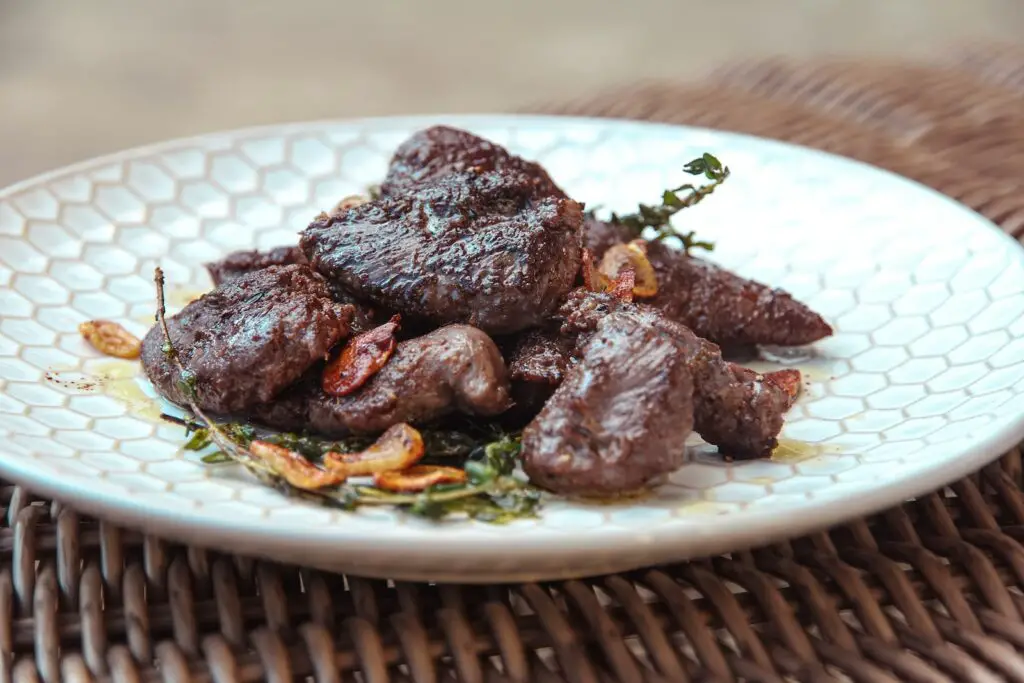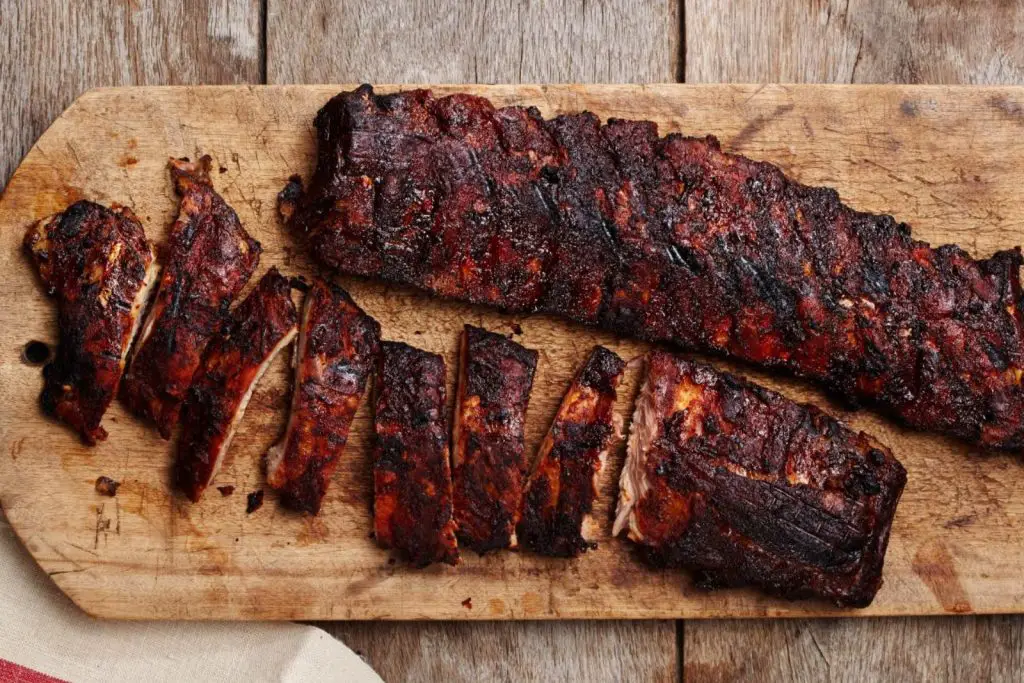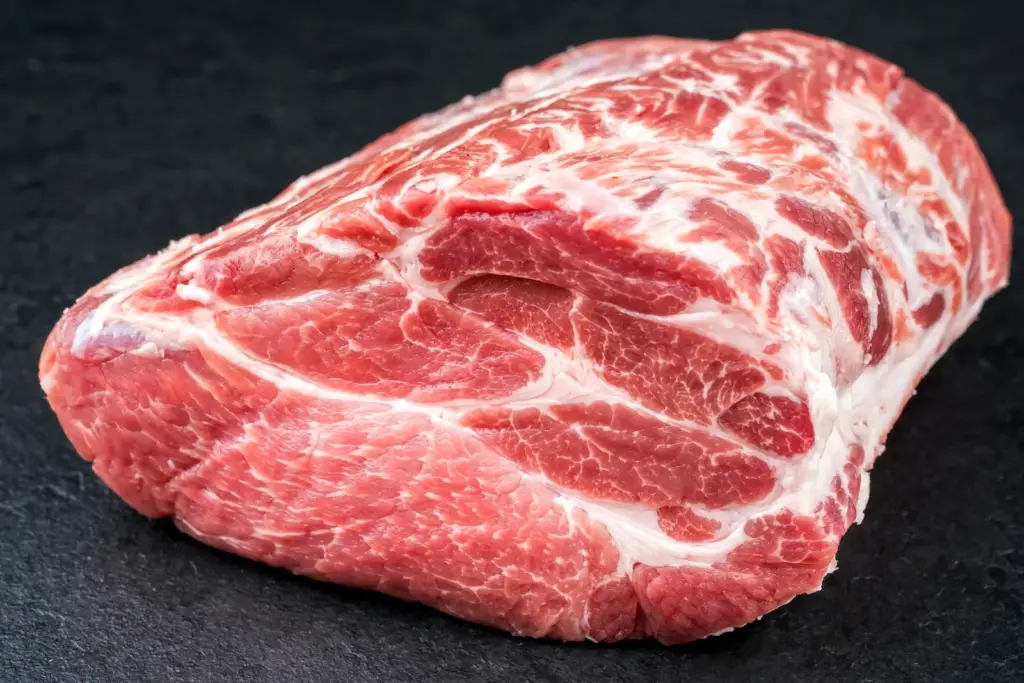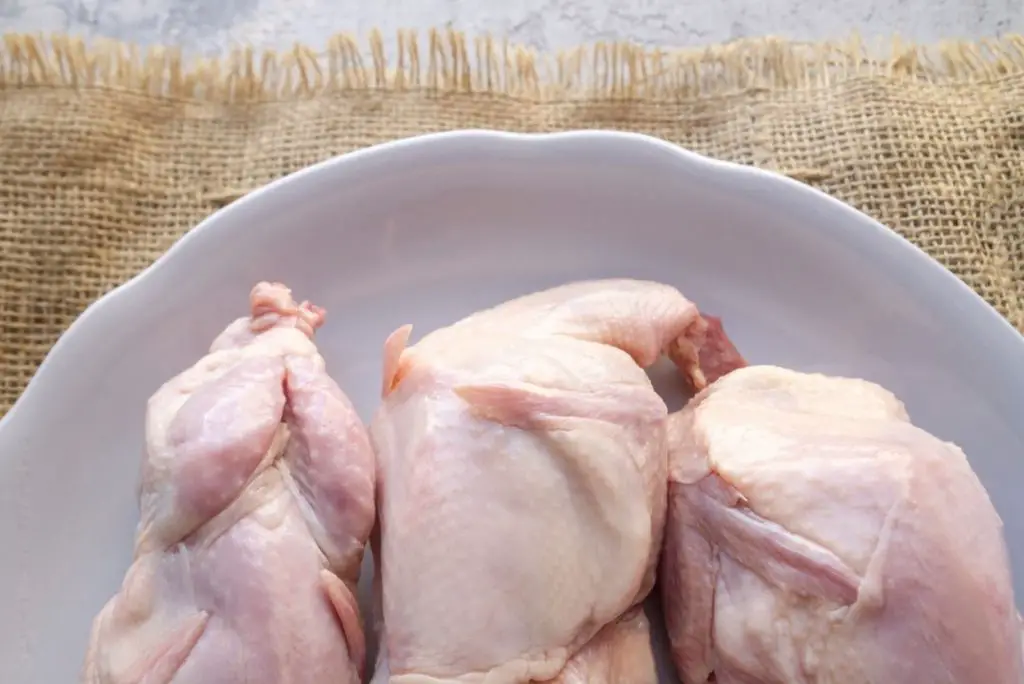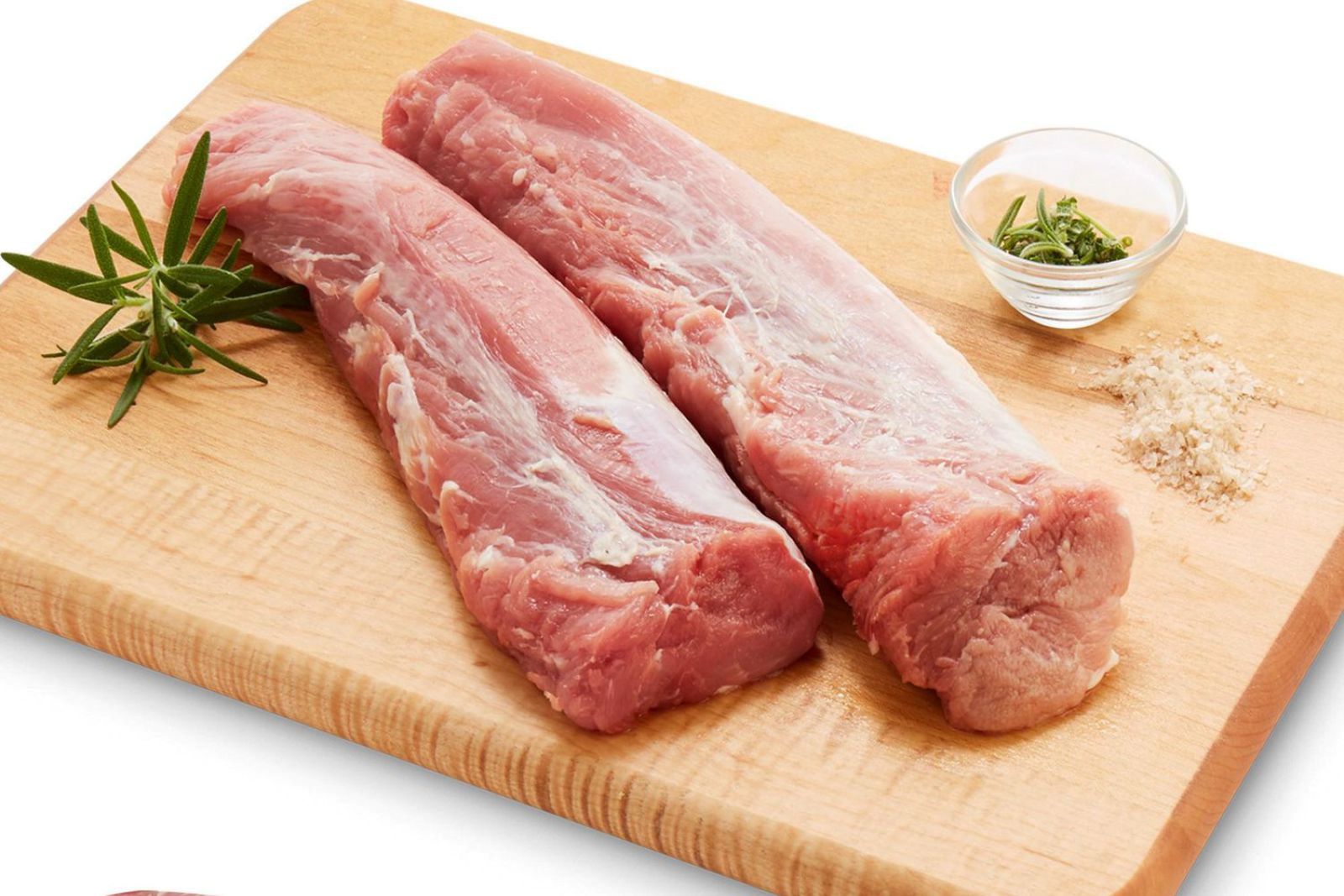
Pork tenderloin, often referred to as the “filet mignon of pork,” is a tender and lean cut of meat that offers a delicate flavor and versatility in the kitchen. This prized cut comes from the loin area of the pig and is known for its tenderness and juiciness. With its mild taste, pork tenderloin lends itself to a variety of cooking methods, such as roasting, grilling, or pan-searing, allowing it to be the star of elegant meals or casual weeknight dinners.
If you have purchased or cooked more pork tenderloin than you can consume in one sitting, freezing can be an excellent way to preserve its quality and extend its shelf life. Freezing pork tenderloin ensures that you can enjoy this delectable meat at your convenience, allowing you to savor its flavors whenever the craving strikes. In the following section, we will explore the process of freezing pork tenderloin and provide tips for maintaining its texture and taste after thawing.
Here’s how to freeze pork tenderloin:
Step 1: Ensure that the pork tenderloin is fresh and properly trimmed.
To ensure that the pork tenderloin is fresh, it’s important to check the color and texture of the meat. The pork should be pink or pale in color and should feel firm to the touch. If the pork is gray or has a slimy texture, it may be spoiled and should be discarded.
In addition to checking for freshness, it’s also important to trim any excess fat or connective tissue from the pork tenderloin. Excess fat can lead to a greasy or oily texture in the cooked meat, while connective tissue can make the meat tough and chewy. Using a sharp knife, carefully remove any visible fat or tissue from the pork tenderloin, being careful not to remove too much of the meat itself.
Trimming the pork tenderloin can also help to ensure that it cooks evenly, as any uneven areas of fat or tissue can cause the meat to cook unevenly. Properly trimming the pork tenderloin will result in a more tender and flavorful end product, and will help to ensure that the meat is safe to consume.
Step 2: Cut the pork tenderloin into smaller portions.
This is an important step because it makes the pork tenderloin easier to manage and thaw as needed. It also allows for more flexibility when cooking, as you can cook only as much pork as needed and save the rest for later.
When cutting the pork tenderloin, it’s important to use a sharp knife and make clean, even cuts. Start by cutting the pork tenderloin in half lengthwise, then cut each half into smaller portions, usually about 1 inch thick. You can also cut the pork tenderloin into medallions or cubes, depending on your preferred cooking method.
Step 3: Wrap each portion of pork tenderloin tightly in plastic wrap.
Wrapping each portion of pork tenderloin tightly in plastic wrap or aluminum foil is a crucial step in the freezing process. This step helps to prevent freezer burn, which is caused by exposure to air in the freezer. Freezer burn can cause the meat to become dry, tough, and discolored, which can negatively affect its flavor and texture.
To wrap the pork tenderloin, start by placing each portion in the center of a piece of plastic wrap or aluminum foil. Wrap the pork tightly, making sure to remove as much air as possible by pressing down on the wrap or foil and smoothing it out. This will help to create a tight seal and prevent air from reaching the meat.
Can I freeze pork tenderloin in the original packaging?
It’s not recommended to freeze pork tenderloin in its original packaging because the packaging is not designed for long-term freezer storage. The thin plastic and Styrofoam trays can crack or break, allowing air to reach the meat and causing freezer burn. It’s best to remove the pork tenderloin from the original packaging and wrap it tightly in plastic wrap or aluminum foil to prevent freezer burn. Then, place it in an airtight container or freezer bag and label it with the date it was frozen.
Step 4: Store the pork tenderloin in the freezer.
Choose a container that is appropriate for the size and number of pork tenderloin portions you are freezing. Make sure the bag or container is labeled with the date the pork was frozen, as well as any other relevant information such as the cut of meat and the weight. This will help you keep track of how long the pork has been in the freezer and ensure that it’s safe to consume.
When placing the wrapped pork tenderloin portions in the bag or container, make sure to remove as much air as possible. This can be done by pressing down on the bag or container and squeezing out any excess air before sealing it. The less air that is in the bag or container, the less likely it is that freezer burn will occur.
Store the pork tenderloin in the freezer at 0°F (-18°C) or below. It’s important to keep the freezer at a consistent temperature to ensure that the pork remains frozen and fresh. If the temperature fluctuates too much, it can cause freezer burn or spoilage.
What’s the best-recommended bag or container for freezing pork tenderloin?
- Heavy-duty plastic freezer bags: These bags are designed to withstand the low temperatures of the freezer and prevent freezer burn. They are also convenient as they take up less space than containers. When using plastic bags, be sure to remove as much air as possible before sealing them. This can be done by gently pressing on the meat to remove excess air or by using a vacuum sealer.
- Airtight freezer containers: These containers are made from durable materials that can withstand the low temperatures of the freezer. They are a good option if you prefer to store your pork tenderloin in a container rather than a bag. It’s important to choose an airtight container to prevent freezer burn and to ensure the meat stays fresh.
- Vacuum-sealed bags or containers: Vacuum-sealed bags or containers are an excellent option as they remove excess air, further reducing the risk of freezer burn. They are a bit more expensive than regular bags or containers, but they can be worth the investment if you plan to freeze meat frequently.
Other related questions
What is the best way to thaw frozen pork tenderloin?
The best way to thaw frozen pork tenderloin is to transfer it from the freezer to the refrigerator and allow it to thaw slowly and safely. It’s recommended to place the wrapped pork tenderloin on a plate or in a bowl to catch any drips and to prevent cross-contamination with other foods. Allow at least 24 hours for every 1 to 1.5 pounds of meat to fully thaw in the refrigerator. Alternatively, you can use the cold water method by placing the frozen pork tenderloin in a sealed plastic bag and submerging it in cold water for 1-2 hours, changing the water every 30 minutes. Avoid thawing pork tenderloin at room temperature as it increases the risk of bacterial growth and foodborne illness.
Is it safe to cook frozen pork tenderloin without thawing it first?
It’s generally not recommended to cook frozen pork tenderloin without thawing it first, as it can result in uneven cooking and potentially dangerous undercooked areas. When meat is cooked from frozen, the outside can overcook while the inside remains frozen, resulting in an unappetizing texture and potential food safety concerns. It’s best to thaw the pork tenderloin before cooking using one of the recommended methods for safe and even cooking.
Can I refreeze pork tenderloin that has already been frozen and thawed?
It’s generally not recommended to refreeze pork tenderloin that has already been frozen and thawed. The freezing and thawing process can affect the quality and safety of the meat, and refreezing can further degrade its texture and flavor. Additionally, refreezing can increase the risk of bacterial growth and foodborne illness. It’s best to cook the thawed pork tenderloin and consume it immediately, rather than refreezing it.
How do I know if my frozen pork tenderloin has gone bad?
If your frozen pork tenderloin has gone bad, there may be signs of freezer burn, which can cause the meat to look dry, discolored, and tough. Additionally, the meat may have a sour or off smell or visible signs of mold or slime. If you suspect that your frozen pork tenderloin has gone bad, it’s best to discard it to avoid the risk of foodborne illness. When in doubt, always use the “when in doubt, throw it out” rule to ensure your safety.
Can I use frozen pork tenderloin with fresh one?
Yes, you can use frozen pork tenderloin with fresh pork tenderloin, but keep in mind that the cooking times may vary. When cooking with a mix of frozen and fresh meat, it’s important to ensure that the frozen meat is completely thawed before cooking to ensure even cooking and to prevent foodborne illness. It’s also recommended to cook the fresh and frozen pork tenderloin separately to ensure that each piece is cooked to the appropriate temperature and texture.
Can I freeze pork tenderloin in portions for meal prep?
Yes, you can freeze pork tenderloin in portions for meal prep. Portioning the meat before freezing can make it easier to thaw and cook the desired amount, reducing waste and saving time. It’s recommended to portion the pork tenderloin into smaller cuts of similar sizes to ensure even cooking and reduce thawing time. Additionally, label the portions with the date of freezing to ensure they are used within a reasonable time frame.
Should I season the pork tenderloin before freezing it?
It’s not necessary to season the pork tenderloin before freezing it, but you can if you prefer. If you decide to season it, make sure to use herbs and spices that can withstand the freezing process without losing their flavor, such as garlic, onion powder, or dried herbs. You can also add a marinade to the pork before freezing it, which can add flavor and tenderize the meat as it thaws. However, keep in mind that the seasoning or marinade may intensify during freezing, so use a lighter hand when seasoning before freezing to avoid overpowering the meat.



